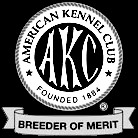|
|
|
Julie
Borst Reed |
|
u |
| u |
| Breeder
Ethics Questionnaire |
| u |
| Puppy Comes Home |
| u |
| u |
| Puppy Temperament Testing |
| u |
| Recommended Diet |
| u |
| FAQs
About Feeding Raw |
| u |
| REAL Dog Food |
| u |
| Fleas 101 |
| u |
| Standard
Poodle Health Concerns |
| u |
| Recommended Vaccination Schedule |
| u |
| Vaccination Decisions |
| u |
| Neutering |
| u |
| Photo Gallery |
| u |
| A Breeder's Life |
| u |
|
Interview
with Dog Breeders' Guild |
| u |
| Poodle Funnies |
| u |
| Tiara Home |
| u |
| u |

|
|
|
About Bloat
Again, this is a disease that no one has the inherited factor figured for certain, nor even the cause known. In mild contrast, at least the reason for the symptoms are known with the Addison's disease. Gastric Dilation and volvulus (Bloat) is seen in STD PDLS and you should know about this disease if you are going to own any dog. I personally don't feel comfortable about breeders suggesting that dogs they have produced should routinely have their stomach "tacked" when sterilized and that has never been a recommendation here. A line with a problem should be known. Owners should report this condition to their bloated dog's breeders immediately. There is a pre-disposition to this condition seen in Standard Poodles and as with Addison's disease, know one knows for certain who the clears may be nor will they ever know without a DNA test. The carriers and affected can only be determined by an individual's episode with this miserable, life-threatening condition.
Perhaps broader, (perhaps) less-elegant, more correct (water) retriever chests could be one of the answers for our STD PDLS?
Please note: Do not feed or water from raised dishes, that was proven not to be beneficial by a study at Purdue. Actually, it proved to enhance the chances for bloat for a number of reasons.
Julie Borst Reed, Tiara
*****************************
BLOAT: THE MOTHER OF ALL EMERGENCIES
There are many injuries and physical disorders which represent life-threatening emergencies. There is only one condition so drastic that it over shadows them all in terms of rapidity of consequences and effort in emergency treatment. This is the gastric dilatation and volvulus - the"bloat."
WHAT IS IT AND WHY IS IT SO SERIOUS?
The normal stomach sits high in the abdomen and contains a small amount of gas, some mucus, and any food being digested. It undergoes a normal rhythm of contraction, receiving food from the esophagus above, grinding the food, and meting the ground food out to the small intestine at its other end. Normally this proceeds uneventfully except for the occasional burp.
In the bloated stomach, gas and/or food stretches the stomach many times its normal size, causing tremendous abdominal pain. For reasons we do not fully understand, this grossly distended stomach has a tendency to rotate, thus twisting off not only its own blood supply but the only exit routes for the gas inside. Not only is this condition extremely painful but it is also rapidly life-threatening. A dog with a bloated, twisted stomach (more scientifically called "Gastric Dilatation and Volvulus") will die in pain in a matter of hours unless drastic steps are taken.
WHAT ARE THE RISK FACTORS FOR DEVELOPING BLOAT?
Classically, this condition affects dog breeds which are said to be "deep-chested," meaning the length of their chest from backbone to sternum is relatively long while the chest width from right to left is narrow. Examples of deep-chested breeds would be the Great Dane, Greyhound, and the setter breeds. Still, any dog can bloat, even dachshunds and Chihuahuas.
Dogs
weighing more than 99 pounds
have an approximate 20% risk of bloat
Classically also, the dog had eaten a large meal and exercised heavily shortly thereafter. Still, we usually do not know why a given dog bloats on an individual basis. No specific diet or dietary ingredient has been proven to be associated with bloat. Some factors found to increase and decrease the risk of bloat are listed below:
- Feeding only one meal a day
- Having closely related family members
with a history of bloat
- Eating rapidly
- Being thin or underweight
- Fearful or anxious temperament
- History of aggression towards people
or other dogs
- Male dogs are more likely to bloat
than females
- Older dogs (7 - 12 years) were the highest risk group
- Inclusion of meat
in the diet
- Inclusion of table scraps in the diet
- Happy or easy-going temperament
- Eating 2 or more meals per day
Factors Increasing the Risk of Bloating
Factors Decreasing the Risk of Bloat
In a study done by the Perdue University
Research Group, headed by
Dr. Lawrence T. Glickman:

The Great Dane was the number one breed at risk for bloat

The St. Bernard was the #2 breed at risk for bloat

The Weimaraner was the #3 breed at risk for bloat
HOW TO TELL IF YOUR DOG HAS BLOATED
The dog may have an obviously distended stomach especially near the ribs but this is not always evident depending on the dog's body configuration.
The biggest clue is the vomiting: the pet appears highly nauseated and is retching but little is coming up.
If this is seen, rush your dog to the veterinarian IMMEDIATELY.
WHAT HAS TO BE DONE
There are several steps to saving a bloated dogs life. Part of the problem is that all steps should be done at the same time and as quickly as possible.
FIRST: THE STOMACH MUST BE DECOMPRESSED
The huge stomach is by now pressing on the major blood vessels carrying blood back to the heart. This stops normal circulation and sends the dog into shock. Making matters worse, the stomach tissue is dying because it is stretched too tightly to allow blood circulation through it. There can be no recovery until the stomach is untwisted and the gas released. A stomach tube and stomach pump are generally used for this but sometime surgery is needed to achieve stomach decompression.
ALSO FIRST: RAPID IV FLUIDS MUST BE GIVEN TO REVERSE THE SHOCK
Intravenous catheters are placed and life-giving fluid solutions are rushed in to replace the blood that cannot get past the bloated stomach to return to the heart. The intense pain associated with this disease causes the heart rate to race at such a high rate that heart failure will result. medication to resolve the pain is needed if the patient’s heart rate is to slow down. Medication for shock, antibiotics and electrolytes are all vital in stabilizing the patient.
ALSO FIRST: THE HEART RHYTHM IS ASSESSED AND STABILIZED
There is a special very dangerous rhythm problem, called a "premature ventricular contraction" or "pvc," associated with bloat and it must be ruled out. If it is present, intravenous medications are needed to stabilize the rhythm. Since this rhythm problem may not be evident until even the next day continual EKG monitoring may be necessary. Disturbed heart rhythm already present at the beginning of treatment is associated with a 38% mortality rate.
Getting the bloated dog's stomach decompressed and reversing the shock is an adventure in itself but the work is not yet half finished.
SURGERY
All bloated dogs, once stable, should have
surgery. Without surgery, the damage done inside cannot be assessed
or repaired plus bloat may recur at any point, even within the next few
hours and the above adventure must be repeated. Surgery, called gastropexy,
allows the stomach to be tacked into normal position so that it may never
again twist. Without gastropexy, the recurrence rate of bloat may be as
high as 75%!
Assessment of the internal damage is also very important to recovery.
If there is a section of dying tissue on the stomach wall, this must be
discovered and removed or the dog will die despite the heroics described
above. Also, the spleen, which is located adjacent to the stomach may
twist with the stomach. The spleen may require removal, too.
If the tissue damage is so bad that part of the stomach must be removed, the mortality rate jumps to 28 - 38%.
If the tissue damage is so bad that the
spleen must be removed, the mortality rate is 32 - 38%.
After the expense and effort of the stomach decompression, it is tempting
to forgo the further expense of surgery. However, consider that the
next time your dog bloats, you may not be there to catch it in time and,
according the study described below, without surgery there is a 24%
mortality rate and a 76% chance of re-bloating at some point. The best
choice is to finish the treatment that has been started and have the
abdomen explored. If the stomach can be surgically tacked into
place, recurrence rate drops to 6%.
RESULTS OF A STATISTICAL STUDY
In 1993, a statistical study involving 134 dogs with gastric dilatation and volvulus was conducted by the School of Veterinary Medicine in Hanover, Germany.
Out of 134 dogs that came into the hospital with this condition:
- 10% died or were euthanized prior to
surgery (factors involved included expense of treatment,
severity/advancement of disease etc.)
- 33 dogs were treated with decompression
and no surgery. Of these dogs, 8 (24%) died or were euthanized within
the next 48 hours due to poor response to treatment. (Six of these 8
had actually re-bloated).
- Of the dogs that did not have surgical
treatment but did survive to go home, 76% had another episode of
gastric dilatation and volvulus eventually.
- 88 dogs were treated with both
decompression and surgery. Of these dogs, 10% (9 dogs)
died in surgery, 18% (16 dogs) died in the week after surgery, 71.5%
(63 dogs) went home in good condition. Of the dogs that went home in
good condition, 6% (4 dogs) had a second episode of bloat later in
life.
- In this study 66.4% of the bloated dogs were male and 33.6% were female. Most dogs were between ages 7 and 12 years old. The German Shepherd dog and the Boxer appeared to have a greater risk for bloating than did other breeds.
Meyer-Lindenberg A., Harder A., Fehr M., Luerssen D., Brunnberg L. Treatment of gastric dilatation-volvulus and a rapid method for prevention of relapse in dogs: 134 cases (1988-1991) Journal of the AVMA, Vol 23, No 9, Nov 1 1993, 1301-1307.
In is crucially important that the owners
of big dogs be aware of this condition and prepared for it. Know where to
take your dog during overnight or Sunday hours for emergency care.
Avoid exercising your dog after a large meal. Know what to watch for.
Enjoy the special friendship a large dog provides but at the same time be
aware of the large dog's special needs and concerns.
Most of the above from the Mar Vista Animal Hospital.



